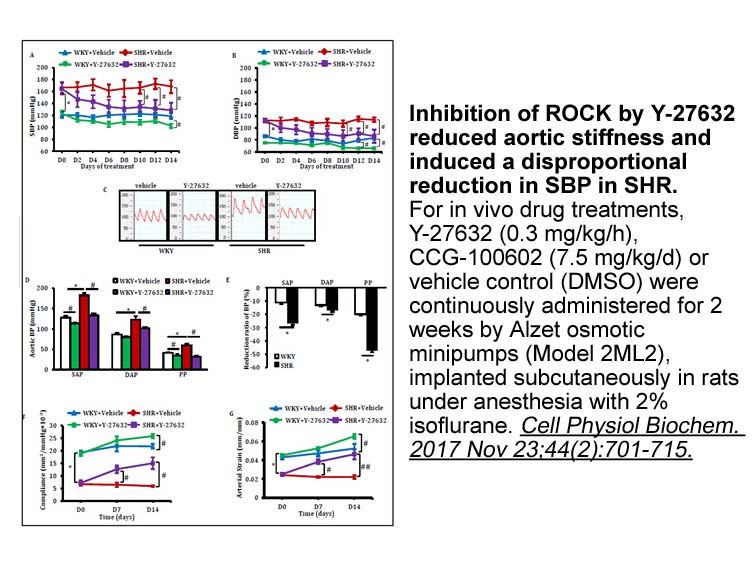Archives
Depletion of PI P e g by knockout of
Depletion of PI(4,5)P2, e.g. by knockout of PIPKIγ, also profoundly inhibits SV endocytosis (Di Paolo et al., 2004). Conversely, loss of the PI(4,5)P2-metabolizing PI-phosphatase synaptojanin or its recruitor endophilin stalls SV recycling at the level of clathrin-coated vesicles (Bai et al., 2010, Cremona et al., 1999, Verstreken et al., 2003) that accumulate due to elevated levels of PI(4,5)P2. PI(4,5)P2 and the related PI(3,4)P2, which acts at late stages of endocytic vesicle formation (Posor et al., 2013), provide (±)-Bay K 8644 for endocytic proteins involved in SV endocytosis and reformation. These include dynamin, whose oligomerization depends on the association of its autoinhibitory PH domain with membrane-PI(4,5)P2 (Reubold et al., 2015), epsins, BAR domain proteins such as endophilin and sorting nexin 9 (Ferguson et al., 2009, Peter et al., 2004), as well as clathrin adaptors (e.g. AP-2, AP180, CALM) required for the reformation of properly sized and shaped SVs (Kononenko et al., 2014, Koo et al., 2015, Soykan et al., 2016). The amount of PI(4,5)P2 may in fact be rate-limiting for SV endocytosis or recycling as overexpression of PIPKIγ elevates presynaptic PI(4,5)P2 levels (Wenk et al., 2001) and promotes clathrin-mediated endocytosis in non-neuronal cells (Antonescu et al., 2011). How the rate of local PI(4,5)P2 synthesis is controlled and coupled to the SV exo-endocytic cycle remains incompletely understood. For example, it is unclear whether phosphatidylinositol 4-phosphate [PI(4)P], the substrate for PI(4,5)P2 synthesis by PIPKIγ, solely derives from its steady-state plasma membrane pool or whether additional PI(4)P is supplied by fusing SVs that contain phosp hatidylinositol 4-kinase IIα (Guo et al., 2003), and therefore conceivably could contribute to the synthesis of PI(4)P and PI(4,5)P2 during SV exo-endocytosis (Fig. 2A). Moreover, PI(4,5)P2 synthesis may be counteracted by phospholipase C-mediated PI(4,5)P2 turnover to generate DAG and inositoltrisphosphate [IP3] (Di Paolo and De Camilli, 2006). How these pathways are regulated and coordinated by synaptic activity is largely unknown. PI(4,5)P2 and other PIPs, thus, likely serve as master organizers of membrane traffic at the synapse that couple the exocytic and endocytic limbs of the SV cycle (Fig. 2A).
Presynaptic exocytosis and endocytosis additionally may be coupled via the phosphorylation of DAG by DAG kinase (DGK). DAG facilitates exocytosis by enhancing the activity of the AZ-associated SV priming factor Munc13 and of protein kinase C, which phosphorylates Munc18 and SNAP-25 (Lauwers et al., 2016, Puchkov and Haucke, 2013). Moreover, phosphorylation of DAG by DGK results in the production of phosphatidic acid (PA), an important co-factor for PI(4,5)P2 synthesis by PIPKIγ and a facilitator of endocytosis (Di Paolo and De Camilli, 2006). Consistent with a putative function of DAG/PA conversion in coupling SV exocytosis and recycling it has been observed that DGKθ facilitates SV endocytosis in cultured cortical neurons in a manner that depends on its PA-synthesizing activity (Goldschmidt et al., 2016). These data suggest a close, yet poorly understood interplay between PIP metabolism and the DAG/PA cycle in coupling SV exo- and endocytosis.
hatidylinositol 4-kinase IIα (Guo et al., 2003), and therefore conceivably could contribute to the synthesis of PI(4)P and PI(4,5)P2 during SV exo-endocytosis (Fig. 2A). Moreover, PI(4,5)P2 synthesis may be counteracted by phospholipase C-mediated PI(4,5)P2 turnover to generate DAG and inositoltrisphosphate [IP3] (Di Paolo and De Camilli, 2006). How these pathways are regulated and coordinated by synaptic activity is largely unknown. PI(4,5)P2 and other PIPs, thus, likely serve as master organizers of membrane traffic at the synapse that couple the exocytic and endocytic limbs of the SV cycle (Fig. 2A).
Presynaptic exocytosis and endocytosis additionally may be coupled via the phosphorylation of DAG by DAG kinase (DGK). DAG facilitates exocytosis by enhancing the activity of the AZ-associated SV priming factor Munc13 and of protein kinase C, which phosphorylates Munc18 and SNAP-25 (Lauwers et al., 2016, Puchkov and Haucke, 2013). Moreover, phosphorylation of DAG by DGK results in the production of phosphatidic acid (PA), an important co-factor for PI(4,5)P2 synthesis by PIPKIγ and a facilitator of endocytosis (Di Paolo and De Camilli, 2006). Consistent with a putative function of DAG/PA conversion in coupling SV exocytosis and recycling it has been observed that DGKθ facilitates SV endocytosis in cultured cortical neurons in a manner that depends on its PA-synthesizing activity (Goldschmidt et al., 2016). These data suggest a close, yet poorly understood interplay between PIP metabolism and the DAG/PA cycle in coupling SV exo- and endocytosis.
The role of the AZ cytomatrix in coupling exo-endocytosis and release site clearance
A crucial question regarding the possible coupling of SV exocytosis and endocytosis is how these processes are controlled in space and time. Recent work in several systems has established that AZ scaffolds, e.g. CAZ proteins such as ELKS, piccolo, bassoon, liprins and Munc13 among others, form a 3-dimensional protein mesh that directs release-ready SVs to sites of Ca2+ entry at the AZ. The geometrical arrangement of release-ready SVs and presynaptic voltage-gated Ca2+ channels may not only be crucial for the synchronization of neurotransmitter release with Ca2+ influx, but also for exo-endocytic coupling, e.g. via formation of nanodomains for Ca2+ signaling (Gundelfinger and Fejtova, 2012, Haucke et al., 2011, Hosoi et al., 2009, Kittel et al., 2006b, Sigrist and Schmitz, 2010, Sudhof, 2012, Wu et al., 2014a, Yamashita et al., 2010). For example, calmodulin mediates both SV endocytosis and rapid recruitment of fast releasing SVs at the calyx of Held (Sakaba and Neher, 2001, Wu et al., 2009, Xie et al., 2017), suggesting possible mechanistic similarities between both processes.